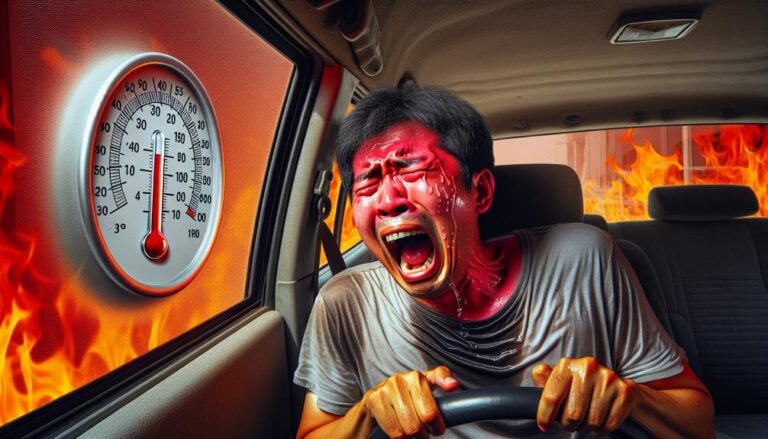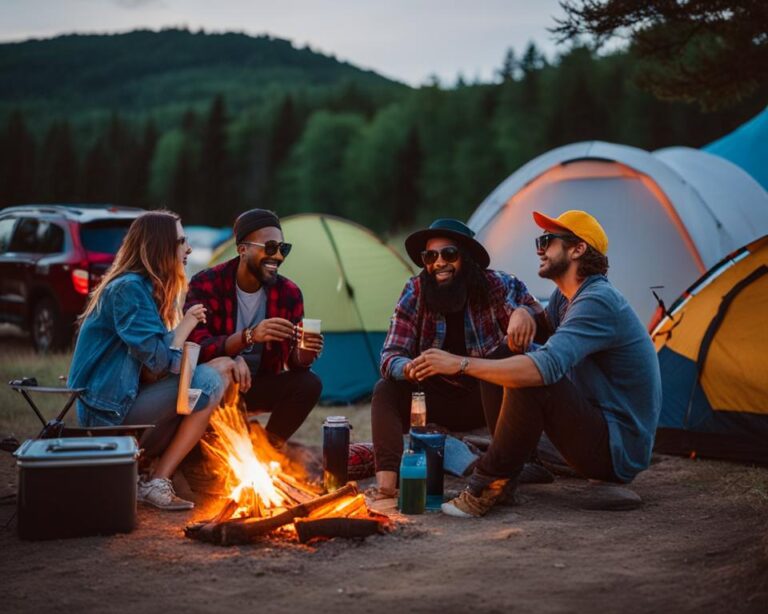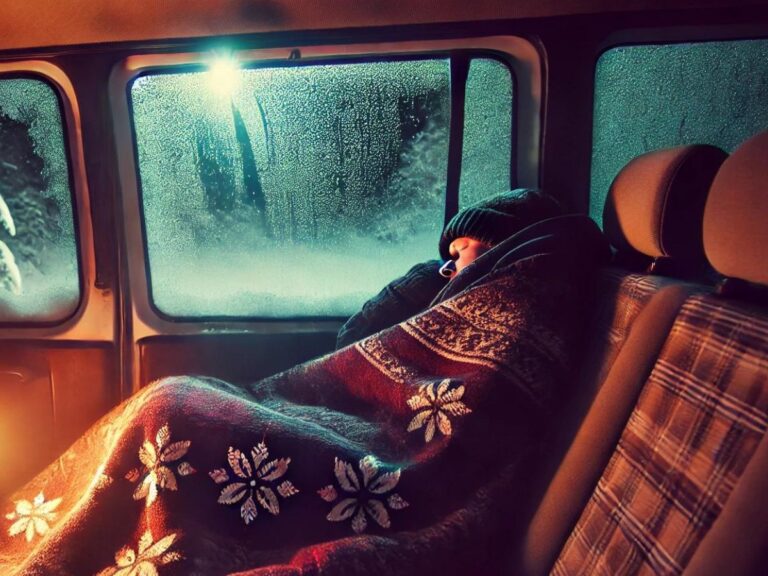Safer Sleep: Car Vs. Tent Safety Factors
Prioritize insulation and ventilation to ensure proper climate control in your car or tent. Your safety and comfort depend on maintaining a comfortable temperature and preventing condensation buildup. Security measures such as locking mechanisms and alarm systems are essential for both accommodations. Select supportive sleeping equipment for better rest. Accessibility to your car or tent is vital for convenience. Opt for weather-resistant materials to stay safe during outdoor stays. Enhance visibility with proper lighting options. Consider noise levels and emergency exits for a peaceful and secure camping experience.
Climate Control
When comparing car and tent safety factors, the importance of climate control is a key consideration to ensure comfort and well-being in varying environmental conditions. Insulation efficiency plays a vital role in maintaining a comfortable temperature inside both cars and tents. Proper insulation helps in reducing energy consumption by minimizing the need for constant heating or cooling. In colder climates, a well-insulated car or tent can retain heat efficiently, keeping you warm throughout the night without excessive energy usage. On the other hand, in hot and humid conditions, insulation aids in keeping the interior cool, reducing the strain on cooling systems and energy consumption.
Furthermore, controlling humidity levels and preventing condensation is crucial for a safe and comfortable stay. High humidity levels can lead to discomfort, mold growth, and even health issues. Ensuring proper ventilation and using moisture-absorbing materials can help in maintaining ideal humidity levels and preventing condensation buildup, creating a safer and more pleasant environment inside your car or tent.
Ventilation
When considering the safety factors between camping in a car versus a tent, ventilation plays an essential role in your overall well-being. Proper airflow considerations are important to prevent condensation buildup, which can lead to dampness and mold inside your shelter. Understanding the importance of ventilation can greatly impact your comfort and health during your outdoor adventures.
Airflow Considerations
Consider prioritizing proper airflow and ventilation in your tent to maintain a comfortable and safe environment during your camping experience. Sleep quality can be greatly impacted by airflow restrictions within the tent. Poor ventilation can lead to stale air, condensation, and discomfort, affecting your ability to rest well. Safety concerns also arise when there is insufficient air circulation. Without proper airflow, carbon dioxide levels can increase, posing health risks. Additionally, poor ventilation can lead to high humidity levels, potentially causing mold growth and respiratory issues. To improve airflow in your tent, consider opening windows or vents to allow fresh air to enter and circulate. Utilizing a tent fan can also help enhance air circulation, promoting a more breathable environment. By prioritizing airflow considerations, you can ensure a safer and more pleasant camping experience. Remember, good ventilation is essential for both your comfort and well-being while sleeping in a tent.
Importance of Ventilation
Proper ventilation in your tent is essential for maintaining a safe and comfortable camping environment. When considering ventilation, factors such as window placement, air quality, insulation, and condensation prevention play vital roles in ensuring a pleasant camping experience.
- Window Placement: Strategically positioned windows can enhance airflow within the tent, allowing for better circulation of fresh air while helping to regulate temperature and reduce stuffiness.
- Air Quality: Good ventilation helps to maintain healthy air quality inside the tent by allowing for the removal of stale air, odors, and potentially harmful pollutants that may accumulate in enclosed spaces.
- Insulation and Condensation Prevention: Adequate ventilation assists in preventing condensation buildup by balancing the internal and external temperatures, reducing the likelihood of dampness inside the tent. Proper insulation combined with ventilation can help regulate temperature fluctuations and create a more comfortable atmosphere for sleeping.
Security
Enhance your safety by securing your belongings inside both your car and tent when camping to reduce the risk of theft. When it comes to your car, utilize locking mechanisms to secure doors and windows. Guarantee privacy by keeping valuables out of sight, either in the trunk or covered with a blanket. Consider installing an alarm system or using surveillance devices to deter potential thieves.
In your tent, prioritize security by keeping the entrance zipped shut when not in use. Use lockable storage containers or bags for valuables and personal items. Consider lightweight alarms that emit a loud sound when triggered to alert you of any unauthorized entry. To enhance security further, you can set up motion-activated lights around your campsite or tent.
Comfort
When considering comfort while camping, factors such as the sleep surface, temperature regulation, and supportive sleeping equipment play vital roles. The quality of your sleep surface can greatly impact your rest and overall enjoyment of the camping experience. Proper temperature regulation and supportive sleeping equipment are essential for a comfortable night’s sleep in both a car and a tent setting.
Sleep Surface Comfort
For ideal sleep surface comfort while camping, selecting a mattress or sleeping pad that suits your personal preferences and provides adequate support is essential. When evaluating sleep surface ergonomics, it’s vital to assess your individual needs to guarantee a restful night’s sleep. Here are a few factors to take into account:
- Sleeping Pad Options: Choose between air pads, self-inflating pads, or closed-cell foam pads based on your desired level of comfort and insulation. Air pads offer customizable firmness, while self-inflating pads provide a good balance of comfort and convenience. Closed-cell foam pads are lightweight and durable but may be less cushy.
- Insulation Choices: Opt for a sleeping pad with built-in insulation or combine a non-insulated pad with a separate insulating layer for colder conditions. Insulation helps retain body heat and prevents the cold ground from drawing warmth away from your body.
- Sleeping Bag Selection: Pair your sleeping pad with an appropriate sleeping bag rated for the expected temperatures. Consider factors like bag shape, fill type, and temperature rating to ensure a comfortable night’s sleep.
Temperature Regulation
To optimize your camping experience, ensuring proper temperature regulation while sleeping is paramount for comfort and restfulness. When camping, it’s imperative to contemplate insulation options to keep warm during colder nights. Insulating sleeping pads and sleeping bags with higher R-values help trap heat and prevent it from escaping, keeping you cozy throughout the night. Additionally, moisture control is vital to avoid dampness, which can lead to discomfort and even hypothermia in extreme cases. Be sure to use moisture-wicking materials and ventilation to prevent condensation inside your tent, which can make you feel colder.
For seasonal adjustments, consider using different sleeping gear based on the weather conditions. During colder months, opt for sleeping bags rated for lower temperatures and consider adding a liner for extra warmth. In contrast, for warmer seasons, choose lighter sleeping bags with better breathability to prevent overheating. Heat retention is key to staying comfortable at night, so layer up if needed and adjust ventilation accordingly to regulate the temperature inside your sleeping area.
Supportive Sleeping Equipment
Proper selection of supportive sleeping equipment plays a significant role in enhancing your comfort and ensuring a restful night’s sleep while camping. When considering your sleeping setup, it’s important to weigh the benefits of different options available to you.
- Sleeping Bag Options: Choosing the right sleeping bag is vital for a comfortable night’s sleep. Consider factors like temperature rating, insulation type, and size to guarantee a cozy rest.
- Hammock Pros and Cons: While hammocks offer a unique sleeping experience and can be incredibly comfortable, they may not provide the same level of support as a traditional sleeping setup. Consider the terrain and weather conditions before opting for a hammock.
- Pillow Choices, Sleeping Pad Benefits: Pillows can greatly enhance your comfort while sleeping outdoors. Additionally, investing in a quality sleeping pad can provide insulation from the ground, cushioning pressure points, and improving overall comfort throughout the night.
Accessibility
Ensuring easy access to both your car and tent is vital for maintaining a safe camping environment. When considering camping locations, it is important to choose a spot where you can park your car close to your tent. This proximity allows for quick access to your vehicle in case of emergencies or unexpected situations during the night. Additionally, when setting up your sleeping arrangements, position your tent in a location that is easily accessible from your car to avoid any potential hazards during entry and exit.
Furthermore, organizing gear storage inside your car or tent plays an important role in accessibility. Keep essential items like first aid kits, flashlights, and communication devices within arm’s reach to ensure quick access when needed. Prioritize convenience factors by packing your gear in a way that makes it easy to locate and retrieve specific items without causing disruptions to your sleeping area. By considering accessibility in both your car and tent setup, you can enhance safety and overall camping experience.
Weather Resistance
A key factor in guaranteeing a safe camping experience is the ability of your car and tent to withstand various weather conditions. When it comes to weather resistance, there are important features to take into account that can enhance your safety and comfort:
- Waterproof Materials: Opt for tents and car covers made from waterproof materials to protect you from rain and moisture. This feature ensures that you stay dry and warm throughout the night, preventing potential health risks associated with dampness.
- Durability: Choose sturdy materials that can withstand harsh weather conditions. Durable tents and car covers are less likely to tear or get damaged during storms, providing you with a secure shelter.
- Wind Resistance and Insulation: Look for tents and car covers designed with wind resistance features to prevent them from collapsing or blowing away in strong winds. Additionally, good insulation helps retain heat inside, keeping you warm even when temperatures drop.
Considering these factors will help you select weather-resistant camping equipment that prioritizes your safety and well-being.
Visibility
How can visibility impact the safety and functionality of your camping setup? Nighttime visibility plays an important role in guaranteeing a safe and enjoyable camping experience. When setting up your campsite, it’s vital to take into account the lighting conditions after sunset. Proper campsite lighting not only enhances the overall ambiance but also helps prevent accidents and allows you to navigate around the campsite with ease.
Insufficient lighting can lead to tripping hazards, difficulty locating essential items, and even potential dangers like wild animals. To improve nighttime visibility, consider bringing along portable LED lanterns, headlamps, or string lights to illuminate key areas such as the tent entrance, cooking area, and paths to the restroom facilities.
When choosing campsite lighting, opt for options that are durable, water-resistant, and have adjustable brightness settings. Additionally, always remember to pack extra batteries or a portable power source to make sure your lighting remains reliable throughout your camping trip. By prioritizing nighttime visibility through adequate campsite lighting, you can create a safer and more functional outdoor environment for yourself and your fellow campers.
Noise Levels
Given the significance of noise levels on camping safety, it is essential to comprehend how excessive noise can disrupt your camping experience and potentially compromise your ability to relax and rest adequately. When camping, creating a silent environment is vital for a good night’s sleep and overall well-being. Here are some key points to keep in mind:
- Sound Insulation: Utilize soundproofing techniques such as adding extra layers to your tent, using earplugs, or choosing a campsite away from noisy areas to minimize external sounds.
- White Noise: Consider using white noise machines or apps to mask disruptive sounds and create a more peaceful sleeping environment.
- Silent Environment: Prioritize selecting a quiet campsite and maintaining a noise-free zone within your sleeping area to enhance your overall camping experience and ensure a restful night.
Emergency Exit
Guaranteeing clear and accessible emergency exits in your camping tent is essential for your safety in case of unforeseen emergencies. When setting up your tent, always consider safety precautions such as keeping your emergency exit unobstructed. Make sure all occupants are aware of the exit strategy in case of an emergency. An effective emergency plan includes knowing the location of all exits, practicing how to open them quickly, and assigning roles in case of evacuation.
To secure easy access to your emergency exit, consider placing your tent in a location that allows for a clear path to safety. Avoid setting up near potential hazards that could block your exit. Additionally, keep a flashlight near the exit to aid in low-light situations. Regularly check that the zippers or fastenings of your tent are in good working condition to prevent any delays during an emergency.
Weighing the Safety Factors of Sleeping in a Car Versus a Tent
In summary, when considering the safety factors of sleeping in a car versus a tent, it is important to weigh the pros and cons of each option. Factors such as climate control, ventilation, security, comfort, accessibility, weather resistance, visibility, noise levels, and emergency exits play an essential role in ensuring a safe and comfortable sleeping environment. Ultimately, the choice between sleeping in a car or a tent will depend on personal preferences and the specific circumstances of the situation.







